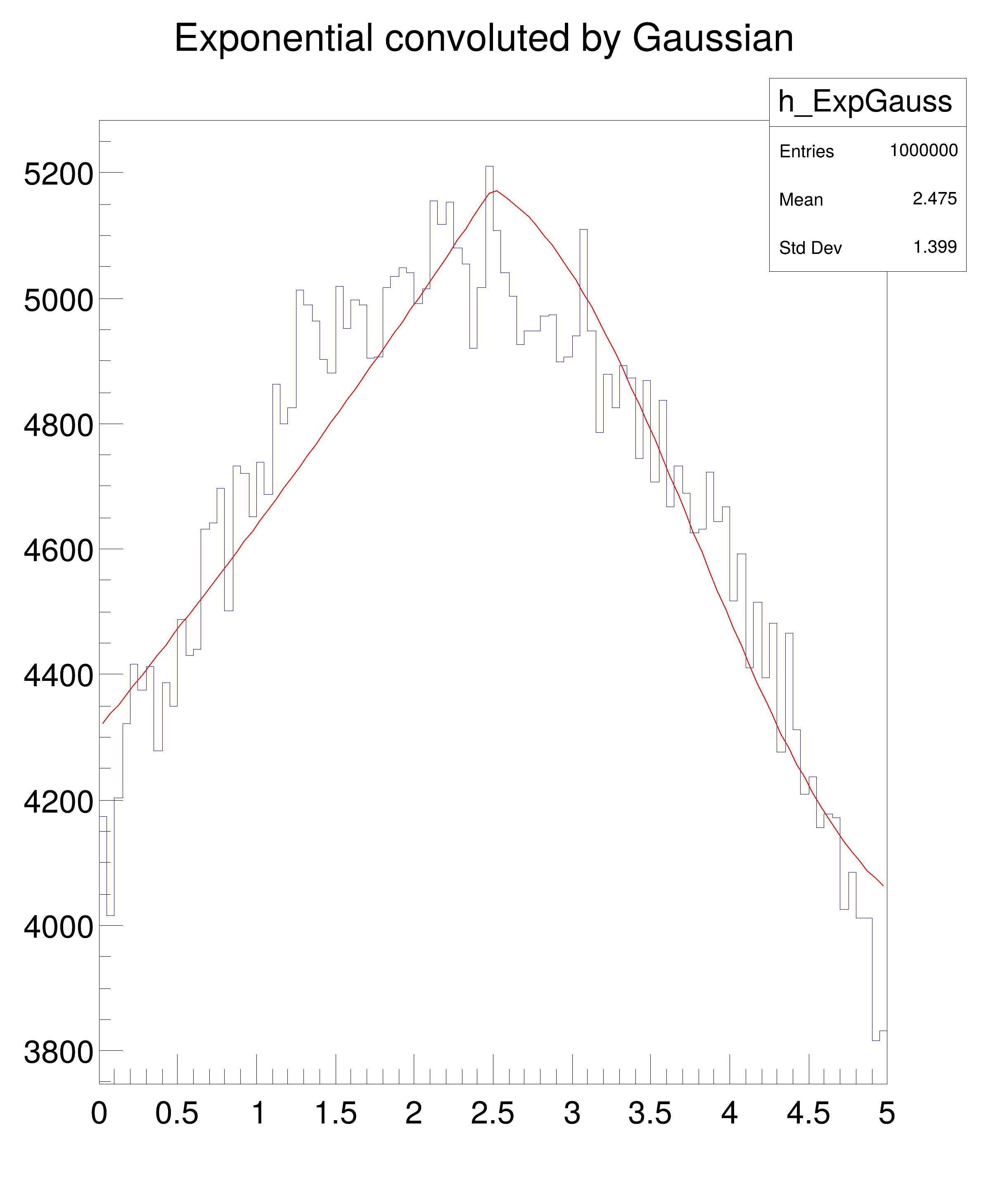

Tutorial for convolution of two functions
****************************************
Minimizer is Minuit2 / Migrad
Chi2 = 298.12
NDf = 96
Edm = 1.51262e-07
NCalls = 448
p0 = 7.3286 +/- 0.0370694
p1 = 0.0733035 +/- 0.00244047
p2 = -2.26419 +/- 0.0491658
p3 = 1.1281 +/- 0.0628599
import ROOT
import numpy as np
h_ExpGauss =
ROOT.TH1F(
"h_ExpGauss",
"Exponential convoluted by Gaussian", 100, 0.0, 5.0)
[
]
)
)
ROOT::Detail::TRangeCast< T, true > TRangeDynCast
TRangeDynCast is an adapter class that allows the typed iteration through a TCollection.
- Author
- Jonas Rembser, Aurelie Flandi (C++ version)
Definition in file fitConvolution.py.


